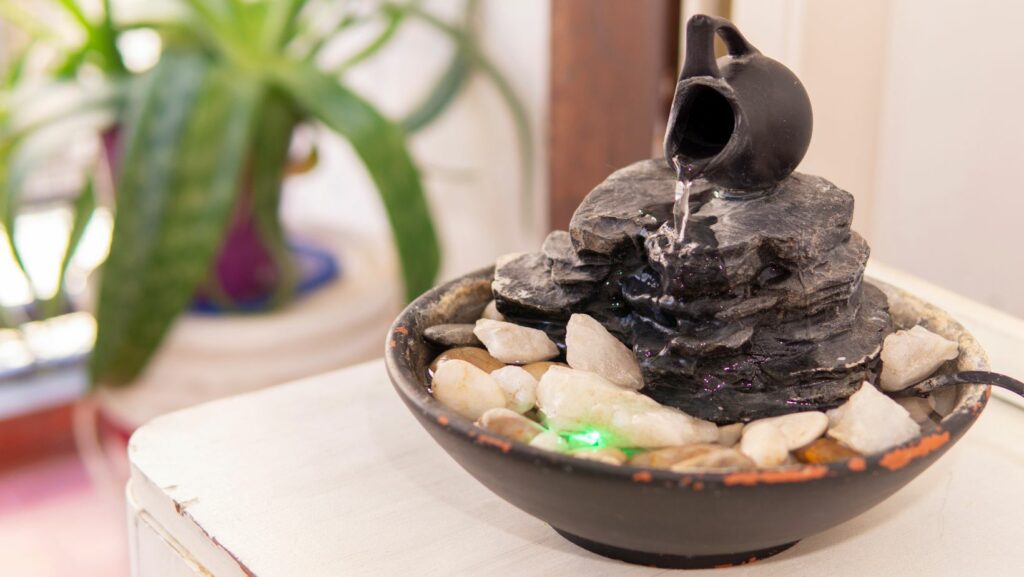Selecting an indoor fountain for your office or home can greatly improve the ambiance and provide a sense of tranquility. When choosing a fountain, it’s important to consider the size and design to ensure it fits well in the intended space. Indoor fountain designs range from sleek modern types to more traditional options, giving you plenty of choices to match your decor.
Considering the material of the fountain is also important. Lighter materials like glass or ceramic are easy to maintain and move around. You can explore various indoor fountains that not only look stylish but are functional, too.
Maintenance is another key factor. Fountains can act as natural humidifiers, so you’ll need to check the water level regularly. Choosing a fountain that requires minimal upkeep will save you time and effort, allowing you to focus on enjoying the serene atmosphere it brings to your environment.
Selecting the Perfect Fountain Design
Finding the right indoor fountain involves selecting from different types, materials, and sizes. It’s essential to consider how each element will fit and improve your space.
Understanding Fountain Types
There are several indoor fountain types to choose from. Tabletop fountains are small and can fit on desks or shelves, making them great for limited spaces. Floor fountains stand on the ground and can become significant focal points in a room. Wall fountains are mounted on walls, adding visual interest without taking up floor space. Each type has distinct advantages and can match various room layouts and preferences.
Materials and Aesthetic Appeal
The material of your indoor fountain impacts its look and feel. Stone options like granite, marble, and slate offer a traditional and natural vibe. Glass and ceramic fountains add a modern and sleek touch. Metals like copper and bronze provide a contemporary or industrial appearance. Select materials that complement your existing decor. Consider the durability and maintenance required for each type to ensure it fits your lifestyle.
Size, Shape, and Proportion
When choosing a fountain, think about its size, shape, and proportion relative to your space. Measure the area where you plan to place the fountain to ensure it fits well. Small fountains are suitable for compact areas, while large ones make a striking impact in open spaces. Shapes vary from simple geometric forms to intricate designs. Balance the fountain’s size with other elements in the room to maintain harmony. The fountain should improve the space without overwhelming it.

By carefully considering these aspects, you can select a fountain that not only looks good but also fits seamlessly into your home or office environment.
Practical Considerations for Indoor Fountains
When selecting an indoor fountain, it’s essential to think about various practical considerations. These include how you will install and maintain the fountain, the safety and space it requires, and how much it will cost both initially and over time.
Installation and Maintenance
Proper installation of an indoor fountain is important. You’ll need to ensure that the location is stable and that the water pump is correctly set up. Regular cleaning is important to prevent algae and other contaminants from building up. The pump should be checked frequently to ensure it operates smoothly. Water levels should be monitored and topped up as needed to maintain optimal performance.
Lightweight materials may be easier to handle during installation, while heavier ones might require professional help. Make sure to account for the ease of accessing the pump and the fountain for cleaning and maintenance tasks.
Safety and Space Requirements
Safety is a significant concern, especially if you have pets or small children. Ensure the fountain has no small parts that can be swallowed and that the electrical components are safely out of reach. Installing a wall access door can help conceal and protect wiring or maintenance areas. Choose a location that doesn’t create a tripping hazard and has easy access to a power source.
Consider the fountain’s size and the space available in your office or home. Measure the area where you plan to place the fountain and ensure it fits comfortably. Rooms like the living room or bedroom may benefit from the calming atmosphere created by the gentle trickle of water, while an entrance can be brightened up with a welcoming water feature.
Budgeting and Ongoing Costs
Indoor fountains can vary greatly in price. It is necessary to set a budget before beginning your search. Consider not just the initial cost but also the ongoing maintenance expenses. Regular upkeep, such as cleaning and replacing filters, can add to the total cost over time.

Additionally, factor in the utility costs related to operating the water pump and any lighting if the fountain includes illuminated features. Opt for an affordable model if you’re on a tight budget, but remember that sometimes spending a bit more initially can save money in the long run by reducing maintenance needs.
Conclusion
Choosing the right indoor fountain for your space involves considering size, style, and material to ensure it complements your decor and fulfills your needs. Think about where you will place the fountain and how much maintenance it requires.
A well-chosen fountain can add beauty and tranquility and even improve air quality, making your home or office a more enjoyable place to be. Be mindful of these factors to make an informed decision.

